|
Joseph Haydn
(1732-1809)
Les 7 dernières Paroles du Christ sur la Croix
The 7 last Words of Christ on the Cross |
|
|
|
Alia Vox AVSA9854
Code-barres/Barcode:
7619986398549 |
|
Super Audio CD
&
Standard audio |
|
|
NOUVEL ENREGISTREMENT / NEW RECORDING
~ 2006 ~
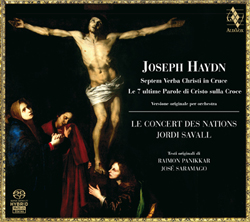
|
Description
Artistes / Performers
Le Concert des Nations
Jordi Savall
Récitant / Evangelist : Francisco Royas
Lieu d'enregistrement
: Église
Santa Cueva de Cádiz
Recording site: Church of
Santa Cueva, in Cadiz
Dates d'enregistrement:
du 2 au 4 octobre 2006
Recording dates:
from Oct. 2-4-, 2006
Durée totale / Total time: 68'
Version DVD / DVD version
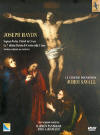
AVDVD 9868
Parution/Released: 10/2009
Diapason no. 576 (01/2010)
Classica, no. 119 (02/2010)
Opus
Haute Définition
(Français & English.)
Classics Today (U.S.A.)
Fanfare 33:4 (03/04 - 2010)
B.B.C. MUSIC
Audiophile Audition
|
|
|
|
 |
|
 Un tout nouvel enregistrement
par Jordi Savall et ses musiciens du Concert des Nations de
la version pour orchestre d'une oeuvre destinée à être
interprétée lors de l'office du vendredi saint de 1787, en
l'église de la "Santa Cueva" à Cadix .
Un tout nouvel enregistrement
par Jordi Savall et ses musiciens du Concert des Nations de
la version pour orchestre d'une oeuvre destinée à être
interprétée lors de l'office du vendredi saint de 1787, en
l'église de la "Santa Cueva" à Cadix .
|
 An entirely new recording by
Savall and his musicians from Le Concert des Nations of the
orchestral version of a work commissioned by the chirch of "Santa
Cueva" of Cadix and performerd there for the first time on
Holy Friday, in 1787.
An entirely new recording by
Savall and his musicians from Le Concert des Nations of the
orchestral version of a work commissioned by the chirch of "Santa
Cueva" of Cadix and performerd there for the first time on
Holy Friday, in 1787.
|
|
Évaluations recensées / Reviews
located |
|

12/2007
(See below)
|

#
552
(11/2007)
(Voir ci-dessous) |

# 97
(11/2007)
(Voir ci-dessous) |
|

By: David Hurwitz |

Opus Haute Définition |
|

Par: Matthias Lange |

(11/2007) |

par: Laurence Le Diagon-Jacquin |

Guillaume-Hugues Fernay -
01/10/2007 |

Reviewer: Steven Ritter |
|

Les Sept Dernières Paroles
du Christ en croix
|

The Seven Last Words of Christ |
|
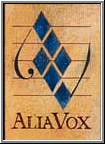
Extrait du livret / From the liner notes |
|
 Les Sept dernières Paroles
du Christ et de l'Homme
Les Sept dernières Paroles
du Christ et de l'Homme
Commentaires par Jordi Savall
Eté 2007
"Avec "Les Sept Dernières
Paroles du Christ sur la Croix" de Joseph Haydn, voici une des
œuvres musicales les plus représentatives du "Siècle des Lumières".
Plus de deux cents ans nous séparent de cette époque et, malgré
cela, son message spirituel et son potentiel expressif gardent toute
leur validité et leur pouvoir de suggestion. La merveilleuse Lumière
qui émane de chacune de ces pages est restée intacte, grâce au génie
créatif, à la richesse intérieure et à la capacité de symbolisme
poético-musical du maître d'Esterházy. Ces sept mouvements lents –
huit si nous comptons l' Introduzione-, réalisés avec une telle
variété de recours dans l'invention musicale, dans les rythmes, la
dynamique, les tonalités, la sélection des thèmes et cette peinture
sonore et expressive exceptionnelle, nous font perdre totalement
conscience de la succession de pièces d'aspect et de dimension très
semblables. Mais il faut surtout souligner le facteur essentiel qui
donne sa valeur particulière à ce cycle: le climat expressif qui
reste constamment d'une intensité et d'une ferveur suprêmement
émouvantes. Haydn l'entendait ainsi, quand il nous expliquait son
idée: “Chaque Sonate, ou chaque texte, est exprimé par les seuls
moyens de la musique instrumentale de telle manière qu’il éveillera
nécessairement l’impression la plus profonde dans l’âme de
l’auditeur le moins averti” (lettre du 8 avril 1787 à son éditeur de
Londres Forster)."
 The Last Words of Christ
and of Man
The Last Words of Christ
and of Man
Commentaries by
Jordi Savall
Summer of 2007
"Joseph Haydn’s “The 7 Last Words of
Christ on the Cross” is one of the most emblematic musical creations
of the Age of Enlightenment. More than 200 years later, its
spiritual message and expressive power are as vibrant and suggestive
as ever. The wonderful Light emanating from each of these pieces
remains undimmed, thanks to the composer’s creative genius, his rich
inner life and his capacity for poetic/musical symbolism. Seven
slow movements – eight if we count the Introduzione- wrought with
such variety in terms of their musical invention, rhythms, dynamics,
keys and themes, as well as their exceptionally rich palette of
sound and expression, that we are totally oblivious to the fact that
they are essentially very similar in terms of form and length. But,
above all, there is one essential quality that makes this cycle of
movements unique: the expressive mood remains one of supremely
moving intensity and fervour throughout. Haydn explained his own
vision of the work in the following words: “Each Sonata, or rather,
each setting of the text, is expressed by instrumental music alone,
but in such a way that it creates the most profound impression on
even the most inexperienced listener.” (Letter dated 8th April,
1787, to his London publisher William Forster)."
|
|
Diapason- # 552
(11/2007)
|
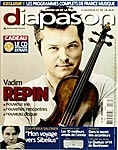 |
Appréciation
5 Diapasons
Evaluation |
Abonnement
Subscription |
Analyste: Jean-Luc
Macia
Résumé ou abrégé:
Jean-Luc Macia semble avoir bien apprécié ce
nouvel enregistrement réalisé en 2006. Il écrit: "Le raffinement
coloriste des cordes, l'atmosphère très Caravage..., la tension
croissante que Savall imprime mouvement après mouvement servent
admirablement le dolorisme mi-imagé, mi-abstrait élaboré par le
musicien d'Esterházy. Rien n'est souligné, tout est suggéré avec
subtilité, à l'exception du tremblement de terre final..."
Tout en soulignant le qualité du présent enregistrement, Jean-Luc
Macia conclue que toutefois "... il n'égale pas tout à fait celui de
1990 ...". (Astrée 8739)
|
Reviewer: Jean-Luc
Macia
Abridged version :
Jean-Luc Macia has high regards for this new
recording (2006) of Haydn's "The Seven Last Words of Christ on the
Cross". He writes: "The colourful refinement of the strings, the
atmosphere very reminescent of Caravaggio..., the increasing tension
which Savall imparts movement after movement do justice
admirably to to this atmosphere of pain, half illustrated, half
abstract that Haydn has imbedded in his composition. Nothing is
underlined, everything is suggested with subtlety, with the
exception of the final earh quake...".
Macia concludes his review by mentioning that in spite of all its
qualities, this recording does not quite equal the one made by
Savall in 1990...". (Astrée
8739)
|
|
Classica- # 97
(11/2007)
|
 |
Appréciation:

Evaluation:
|
Abonnement
Subscription |
Analyste: Jean-Noël Coucoureux
Résumé ou abrégé:
Jean-Noël Coucoureux accorde la plus haute note
d'appréciation à ce nouvel enregistrement de cette oeuvre de Haydn
dans sa version orchestrale.
Il écrit: "... le climat ascétique règne en maître, les tempi sont
lents, les textures sonores aérées, presque décharnées...". Il
poursuit: " L'ascèse n'est cependant pas le seul registre du chef
catalan. La générosité de son tempérament s'épanouit dans l'usage
d'une large palette de couleurs au service d'une théâtralité bien
maîtrisée."
Coucoureux conclue son analyse en disant qu'il est "... difficile de
départager les deux réalisations (1990 vs 2006) de Savall qui se
placent au sommet de la discographie de l'oeuvre dans sa version
orchestrale." |
|
Reviewer: Jean-Noël Coucoureux
Abstract :
Jean-Noël Coucoureux is
highly
impressed by Savall’s new recording of the orchestral version of
Haydn’s “The 7
Last Words of
Christ on the
Cross".
He writes: “… the ascetic climate is well established, the tempi are
slow, the sonorous textures well-ventilated, almost bare…”.
“Asceticism is not the sole register of the Catalan maestro. The
generosity of his character blossoms through the use of a wide range
of colors, doing justice to a theatricality well under control”.
Coucoureux concludes by stating that “… it is difficult to choose
between one or the other version (1990 vs 2006). They are both at the
top of the discography of the work in its orchestral version”. |
Classica / Répertoire no. 98
12/ 2007 - 01/2008 |
 |
Appréciation:

Evaluation: |
Abonnement
Subscription |
Rubrique: Discophage - Les meilleures prises de
son
Analyste: Philippe van den Bosch
"L'excellence des SACD d'Alia Vox se perpétue avec cette captation
d'un orchestre de chambre d'une précision et d'une vérité
scrupuleuse, rendant sensible le grain et les aspérités des cordes,
avec un beau grave opulent, un aigu fin et fruité, beaucoup de
relief, une présence spectaculaire. Le son s'épanouit dans la
réverbération naturelle d'une église. Il est juste que les quelques
interventions de l'évangéliste ne semblent pas se situer dans le
même espace, comme si sa voix avait été amplifiée, mais ce n'est là
qu'une infime réserve". |
|
Gramophone-
(12/2007)
|
GRAMOPHONE
ARCHIVE
|
Subscription
Abonnement |
Reviewer:
Richard Wigmore
Excerpt:
"This
rare recording of the orchestral Words, interspersed with
brief Gospel readings (in Latin), was made in the same church in Cádiz
(Santa Cueva) for which Haydn composed the work in 1786. Its
acoustic, spacious yet not overly cavernous, is very apt for this
music. Though his period orchestra, based on a string section of
16, is smaller than I find ideal, Jordi Savall directs a good,
straightforward performance, carefully balanced, and minutely
attentive to the composer's
markings, not least the disruptive sforzando accents that
pepper the score. The Earthquake, complete with gunfire timpani
and screeching, snarling valveless brass, is properly convulsive". |

Vol. 31:5 (May/June
2008) |
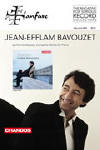 |
Abonnement
Subscription |
Reviewer:
Jerome F. Weber
Excerpt:
"The first recording
of Haydn’s Good Friday music to be made at the Santa Cueva in Cadiz,
the site for which the work was commissioned, adds to a considerable
list of performances that include some sort of text corresponding to
the sermons that the music was designed to embellish. Savall himself
recorded this orchestral version for Astrée with Rafael Taibo
reciting in Latin before each movement the gospel passages that lead
into each of the Savior’s words, the same texts that we hear again
in this recording".
"(This) new performance is superb, and the acoustics are
unexceptionable, for the Santa Cueva is not only the authentic site
but also a warm and easily managed recording venue".
"Savall has duplicated
his original feat in a recording of unique stature". |

Vol. 33:4 (Mar/Apr 2010) |
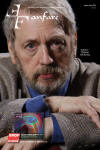 |
Abonnement
Subscription |
Reviewer:
Jerome F. Weber
About the DVD version
Excerpt:
"Since Savall’s
performance is so fine to begin with, this DVD is a richer
presentation of the Haydn masterpiece than any other recording. The
camera departs from the Santa Cueva on occasion to show a typical
Spanish Good Friday procession such as I witnessed in Cuenca a few
years ago. Anyone who cherishes this work will want to have this,
even if one already has several superb recordings of the music in
its string quartet or choral formats. This uniquely captures the
spiritual meaning of the music". |
|
|
La musique / The music |
|
1.L'Introduzione.
Maestoso ed adagio |
9
Sonata IV. Largo. |
|
2. Evangelium:
Pater, dimitte illis; non enim sciunt quid faciunt |
10.
Evangelium: Sitio |
|
3. Sonata 1.
Largo |
11. Sonata V
. Adagio |
|
4. Evangelium:
Hodie mecum eris in Paradiso |
12.
Evangelium: Consummatum est |
|
5. Sonata II.
Grave e Cantabile |
13. Sonata VI.
Lento |
|
6. Evangelium:
Mulier ecce filius tuus |
14.
Evangelium: Pater, in manus tuas comedo spiritum meum |
|
7. Sonata III.
Grave |
15. Sonata
VII. Largo |
|
8. Evangelium:
Deus meus, Deus meus, ut quid dereliquistime ? |
16. Il
Terremoto. Presto con tutta la forza |
|
Autres références disponibles via la base de
données de Todd McComb/ Other available references via
Todd McComb's database:
(Site: http://www.medieval.org)
Re:
|
|
|
|
|
To order / Commander
Alia Vox AVSA9854
Code-barres/Barcode :
7619986398549
|
Sélectionnez votre
pays et votre devise en accédant
à Presto Classical
(Bouton en haut à droite)
Livraison mondiale |

|
Choose your country
and curency when reaching
Presto Classical
(Upper right corner)
Worldwide delivery |
|
|
La viole de
gambe
Parutions
récentes
2013 à 2022 |
Viola da gamba
Recent
releases
2013 to 2022 |
















